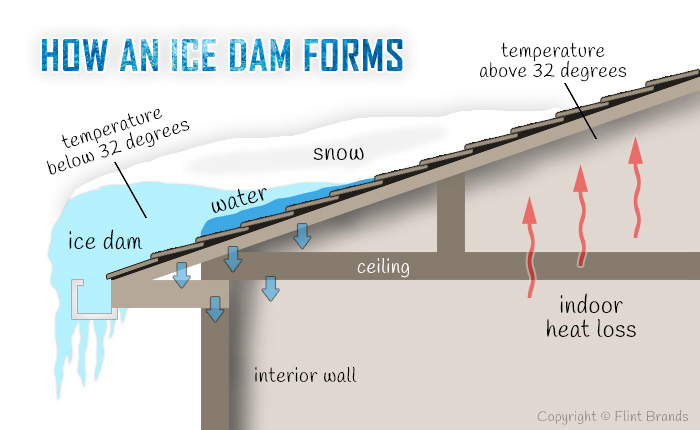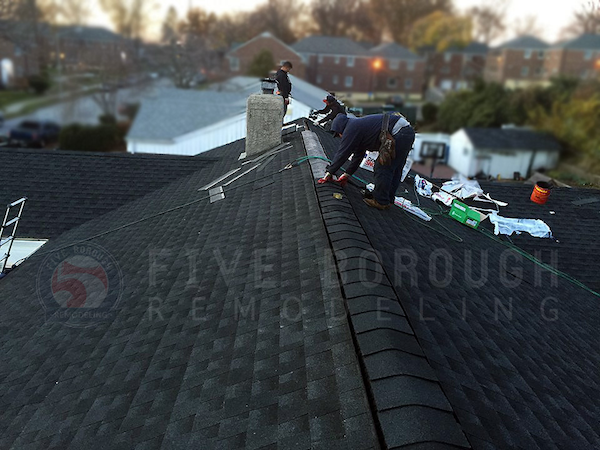
Roofing 101: Ice Dams – Cause and Effect
Happy New Year from the roofers at Five Borough Remodeling! Winter has finally reared its head in Queens and Brooklyn NY, and with it comes a long list of preventative measures homeowners must take to protect themselves against the bitter cold. When it comes to winters in NY, one thing homeowners must consider is the affect ice dams can have on their roof.
What is an ice damn? Simply put, an ice dam occurs when a layer of thick ice builds up along the eaves of your roof, effectively causing a “dam” whereby water cannot pass. If you’ve ever driven by a house in Queens or Brooklyn and noticed a thick layer of snow and ice along the edge of the roof, and the rest of the roof is melted and visible from the street, that would be an ice dam. Many don’t realize that this can have potentially damaging effects to your home, but before we get into those, let’s look at what causes ice dams.
Cause: Poor Attic Insulation: Most roofers will tell you that the root cause of ice dams is poor insulation, and they wouldn’t be wrong in saying that. When you’re attic isn’t insulated properly, heat from your home escapes into the attic, which will heat the plywood of your roof and melt the snow above it. Eventually that water makes its way past the exterior wall and over your soffit, where there’s no more indoor heat to keep it from refreezing. There it will refreeze above the soffit, creating an ice layer along the edge of the roof.
Cause: Poor Roof Ventilation: What many roofers will neglect to tell you is that ventilation plays a big role in all of this as well. When a roof is ventilated properly, it can air out any excess heat that gets trapped in the attic during the winter, preventing the melting from occurring in the first place. This will ensure the snow will melt evenly on the roof, and not only on the top where it will refreeze along the edges.
Ideally, your attic should be the same temperature as the outside of the home at all times during the year, even in the summer. However, an overwhelming percentage of roofs do not have proper ventilation, which causes excessive heat during the summers and ice damming during the winters.
Effects: Ultimately, an ice dam will prevent water from draining off the roof. It’s called a dam for a reason: water will end up sitting right behind it instead of draining off the edge. Any roofer will tell you that where water sits, it will eventually permeate and leak through. Now think about what sits directly below the edges of your roof: your wall cavity. If you’re lucky it may just rot out the plywood along the edge of the roof, but if neglected over time it will make it’s way down into your wall cavity, which can cause your drywall to become not so dry, and it can even lead to mold or electrical fires in severe cases.
Solution: Preventing ice dams is very simple. Check your attic insulation to make sure you’re at least at an R-value of at least R38, or about 13” of fiberglass insulation from your drywall ceiling to the top of your attic insulation. If you’re at any less, call up Five Borough to come and lay down some extra insulation so your keeping heat in. That will not only prevent ice dams, but save you valuable heating dollars during the winter. While we’re there, we’ll check to see if your roof is vented properly, which will help you save energy and be more comfortable in the home year round. Give us a call if you have any questions!








 (347) 974-4445
(347) 974-4445 Get an Estimate in Less than 24 Hours!
Get an Estimate in Less than 24 Hours!